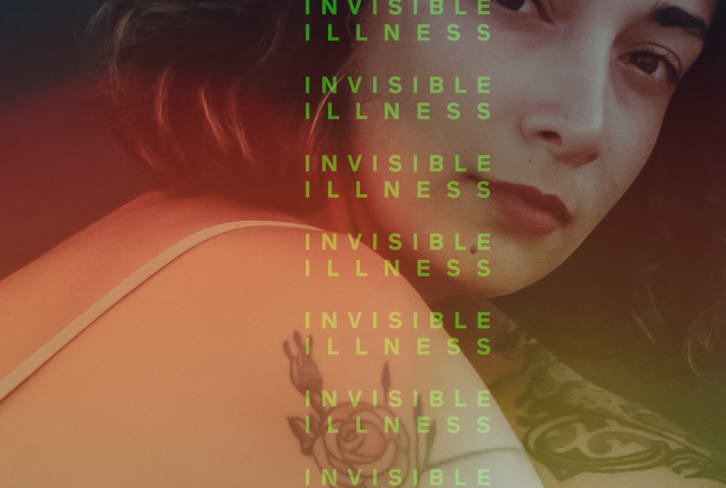Advertisement
The 5 Stages Of Divorce (And How To Turn Your Relationship Around Before It's Too Late)

There are many things you can do to turn your relationship around when you find yourself on a rocky road, if you’re willing to team up and face reality together—and that will only happen if you both want your marriage to last. The key factor in getting back on track is turning things around as early as possible. It happens over different time frames for different people, but at some point, you reach the point of no return.
Marriage therapists often describe five stages in the divorce process that start long before the D-word is ever mentioned by couples. Here, I'll describe each stage and explain how you might start to redirect when it's still possible.
1. Dissatisfaction:
This is a place of disillusionment, where you have a growing sense of disappointment about the way your relationship is going and how you feel around your partner. Maybe the spark has gone out of the relationship and it feels flat. Criticism may creep into your everyday conversations and actions.
Ignore these warning signs at your peril—finding yourself regularly feeling disappointed and flat about your relationship is no small thing. Getting help at this point is likely to be beneficial because you’re probably still both open to change and not yet so resentful of each other that you stop wanting to try. Sadly, one of the most common mistakes couples make is to shut their eyes and keep careening dangerously towards the end of the road believing things will just magically fix themselves. Most of the time, they don’t.
How to turn it around:
Turning around means consciously putting energy into your love like you did at the start, creating a shared focus on connecting, increasing awareness of your relationship vulnerabilities and strengths, seeking strategies to reconnect deeply, learning skills, and building generosity of spirit toward one another again. You must move away from dissatisfaction and back into happiness before too much damage is done to your relationship.
Start by finding the courage to own how you really feel, without defensiveness or blaming. Consider getting couples counseling earlier rather than later, because that’s when it will be most helpful. If that’s too difficult or daunting, at least gather some basic resources that will help you start a new conversation together—some books or an online relationship class to prompt you to face your dissatisfaction head-on together.
2. Emotional erosion:
This is where you stop caring as much about your partner—or worse, developing a sense of resentment and apathy about doing anything to improve your closeness and communication. The distance between the two of you may seem to increase every week. but you don’t pay too much attention. Couples who don’t turn around at this stage tend to increasingly distract themselves and hope the relationship will fix itself. It can last weeks or years depending on how much you can stomach.
How to turn it around:
As you drive around the communication boulders on this rocky road, you start to clearly see why turning around sooner would have been a better idea. The less interest you have in healing the relationship, the more resistance you'll face when you try to turn things around. But that doesn't mean it's necessarily too late. If you care enough to save your relationship, that's enough to take the first step. At this point, professional intervention is your best bet. Try to start regular counseling—on your own, if your partner isn't open to it initially—as soon as possible. That way, even if it doesn't work out in the end, you'll know you did everything you could to save the relationship. And you'll be prepared to move forward in a much healthier way.
3. Loneliness:
In this third stage of a fading relationship trajectory, if you open your tired eyes, you’ll realize that glaringly obvious danger signs have been all over the road for miles. The signs tell you to find each other again urgently—to reactivate intimacy or risk losing it permanently. This is a place of emotional detachment, to the point that other interests—children, friends, work, sports, or even another potential lover may become more important to you than each other. Instead of the disappointment and confusion of dissatisfaction or the anger and resentment of the erosion you may start to feel what Pink Floyd called "comfortably numb." This stage usually ends when something bright and shiny at the side of the road suddenly catches your eye and you feel alive again, awoken to what you’ve been missing. Trouble is, you’re likely to jump out of the car on your own to chase it, causing injury to every heart.
How to turn it around:
Act now if you want to save the relationship with openness, energy, empathy, love, and most of all by teaming up again. This is your relationship’s trial by fire. It shouldn’t have come to this, but it has. Now, you must really fight for each other. Turn to one another with a shared focus, or keep gazing out the side windows, ignoring each other, at your own peril.
Still haven’t managed to turn the car around?
If you've been trying your best and it still hasn't happened, know that it's not your fault. You can't do it alone. It absolutely takes two. Taking the best path is ultimately knowing in your heart that you did your best.
4. The fork in the road:
The fourth stage of the journey to divorce is the fork in the road. Here, single street meets the road you've been on, and your paths diverge. It’s here that you must make the final decision to turn the car around together. Otherwise, it's time to go on alone. Either way, it’s your responsibility to yourselves and any children you have to choose your path with dignity and handle the fallout with maturity and grace.
People survive divorce, but abuse, unkindness, and chaos cause damage—whether a couple stays together or not. If you decide to go your separate ways, don’t let it be any more painful than it has to be.
That's not easy to do when you feel (understandably) angry, lost, panicked, and hurt, but here's how you stay in control.
- Remember that behaving in any way other than with kindness and within your values will hurt everyone even more—including yourself. It will extend your recovery time and intensify the pain all round.
- If you haven't yet, get help now. Breaking up is hard to do. You must both get all the support you can and treat each other with compassion.
5. Mourning:
The final destination on the journey through divorce is a place of sadness and reflection, but maybe also relief. Here, you can finish this relationship journey, remember what was good, and strive to understand what went wrong. You can hope for a better future for all parties involved and do your best to create it.
Acknowledge all the things you are mourning. The end of a marriage means changes to home and family forever, but you will survive and you can all thrive again.
Get support. Allow yourself to feel pride for the mature way you handled things during such a difficult time in your lives. Then focus on growth and learning so that there will be less of a chance of repeating past mistakes in future relationships.
Want more insight into your relationship? Find out the things you should always be selfish about in your partnerships and the questions that could keep your marriage from ending.
Watch Next
Enjoy some of our favorite clips from classes
Enjoy some of our favorite clips from classes
What Is Meditation?
Mindfulness/Spirituality | Light Watkins
Box Breathing
Mindfulness/Spirituality | Gwen Dittmar
What Breathwork Can Address
Mindfulness/Spirituality | Gwen Dittmar
The 8 Limbs of Yoga - What is Asana?
Yoga | Caley Alyssa
Two Standing Postures to Open Up Tight Hips
Yoga | Caley Alyssa
How Plants Can Optimize Athletic Performance
Nutrition | Rich Roll
What to Eat Before a Workout
Nutrition | Rich Roll
How Ayurveda Helps Us Navigate Modern Life
Nutrition | Sahara Rose
Messages About Love & Relationships
Love & Relationships | Esther Perel
Love Languages
Love & Relationships | Esther Perel











